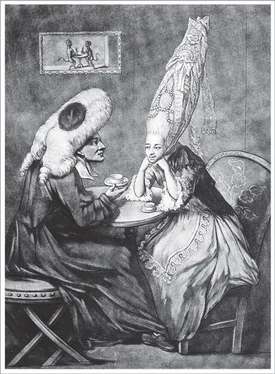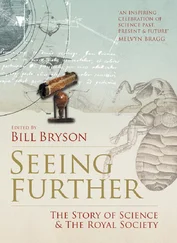Bill Bryson - At Home
Здесь есть возможность читать онлайн «Bill Bryson - At Home» весь текст электронной книги совершенно бесплатно (целиком полную версию без сокращений). В некоторых случаях можно слушать аудио, скачать через торрент в формате fb2 и присутствует краткое содержание. Жанр: Старинная литература, на английском языке. Описание произведения, (предисловие) а так же отзывы посетителей доступны на портале библиотеки ЛибКат.
- Название:At Home
- Автор:
- Жанр:
- Год:неизвестен
- ISBN:нет данных
- Рейтинг книги:4 / 5. Голосов: 1
-
Избранное:Добавить в избранное
- Отзывы:
-
Ваша оценка:
- 80
- 1
- 2
- 3
- 4
- 5
At Home: краткое содержание, описание и аннотация
Предлагаем к чтению аннотацию, описание, краткое содержание или предисловие (зависит от того, что написал сам автор книги «At Home»). Если вы не нашли необходимую информацию о книге — напишите в комментариях, мы постараемся отыскать её.
At Home — читать онлайн бесплатно полную книгу (весь текст) целиком
Ниже представлен текст книги, разбитый по страницам. Система сохранения места последней прочитанной страницы, позволяет с удобством читать онлайн бесплатно книгу «At Home», без необходимости каждый раз заново искать на чём Вы остановились. Поставьте закладку, и сможете в любой момент перейти на страницу, на которой закончили чтение.
Интервал:
Закладка:
In any case, Mr. Marsham apparently had second thoughts. In the house as built, the dressing room and bedroom are in fact connected. The dressing room is now, and probably for the better part of a century has been, a bathroom. We still do some of our dressing in there, however, which is just as well, because the long and really quite mysterious history of dressing is what we have come here to talk about.
How long people have been dressing themselves is a question not easy to answer. All that can be said is that about forty thousand years ago, there stepped from the shadows the big-brained, behaviorally modern people commonly known as Cro-Magnons (after a cave in the Dordogne region of France where they were first found) and that among these new people was some ingenious soul who came up with one of the greatest, most underrated inventions in history: string. String is marvelously elemental. It is simply two pieces of fiber placed side by side and twisted together. That achieves two things: it makes a cord that is strong, and it allows long cords to be built up from short fibers. Imagine where we would be without it. There would be no cloth, clothing, fishing lines, nets, snares, rope, leashes, tethers, slings, bows for shooting arrows, or a thousand useful things more. Elizabeth Wayland Barber, a textile historian, was hardly exaggerating when she called string the “weapon that allowed the human race to conquer the earth.”
Historically, the two most common fibers were linen and hemp. Linen was made from flax and was popular because flax grows tall—up to a height of four feet—and quickly. Flax can be sown one month and harvested the next. The downside is that flax is tediously demanding in its preparation. Some twenty different actions are required to separate flax fibers from their woody stems and soften them enough for spinning. These actions have arcane names like braking, retting, swingling (or scutching), and hackling or heckling, but essentially they involve pounding, stripping, soaking, and otherwise separating the pliant inner fiber, or bast, from its woodier stem. It is striking to think that when we heckle a speaker today we use a term that recalls the preparation of flax from the early Middle Ages.
The result of all that effort was a sturdy and adaptable fabric: linen. Although we tend to think of linen as snowy white, its natural hue is brown. To become white, it had to be bleached in sunlight, a slow process that could take months to execute. The poorer stuff was left unbleached and made into canvas or sacking. The principal drawback of linen is that it doesn’t take a dye well, so there isn’t a great deal you can do with it to make it exciting.
Hemp was roughly similar to flax, but coarser and not so comfortable to wear, so it tended to be used for things like rope and sails. It did, however, have the evidently very considerable compensating advantage that you could smoke it and get high, which Barber believes accounts for its prevalence and rapid spread in antiquity. Not to put too fine a point on it, people throughout the ancient world were very, very fond of hemp, and grew more of it than they needed for ropes or sails.
But the primary clothing material of the Middle Ages was wool. Wool was a lot warmer and more hard-wearing than linen, but wool fibers are short and difficult to work, especially as early sheep were surprisingly unwoolly creatures. Their wool, such as it was, originally was a downy undercoating beneath dreadlocks of tangled hair. To turn sheep into the blocks of fleeciness we know and value today took centuries of devoted breeding. Moreover, wool wasn’t sheared in the early days, but painfully plucked. It is little wonder that sheep are such skittish animals when humans are around.
Even once medieval people had a pile of wool in front of them, their work was really just beginning. To turn it into cloth required washing, combing, carding, teaseling, warping, sizing, and fulling, among many other processes. Fulling consisted of beating and shrinking the cloth; sizing involved the application of a glaze. Combing the fibers flat created a hard-wearing but comparatively stiff fabric: a worsted. For softer wool, carding paddles were used to make the fibers fluffier. The hair of weasels, stoats, and other animals was sometimes blended into the mix to make the finished cloth more lustrous.
The fourth principal fabric was silk. Silk was a rare luxury, literally worth its weight in gold. Accounts of crime in the eighteenth and nineteenth centuries nearly always dwell on the way criminals were imprisoned or transported to Australia for the theft of a handkerchief or packet of lace or some other seeming trifle, but in fact these were often items of great value. A pair of silk stockings could cost £5 and a packet of lace could sell for £20—enough to live on for a couple of years and an exceedingly serious loss to any shopkeeper. A silk cloak would cost £50—well beyond the means of any but the highest nobility. Most people, if they had silk at all, had it in the form of ribbons or other trim. The Chinese ferociously guarded the secrets of silk production; the punishment for exporting a single mulberry seed was execution. The Chinese needn’t have worried too much about northern Europe, because mulberry trees were too sensitive to frost to thrive there. Britain tried hard for a hundred years to produce silk, and sometimes got good results, but ultimately couldn’t overcome the drawback of periodic harsh winters.
With these few materials, and some trimmings like feathers and ermine, people managed to make wondrous outfits—so much so that by the fourteenth century rulers felt it necessary to introduce what were known as sumptuary laws, to limit what people wore. Sumptuary laws laid down with fanatical precision what materials and colors of fabric a person could wear. In Shakespeare’s day, someone with an income of £20 a year was permitted to wear a satin doublet but not a satin gown, while someone worth £100 a year had no restrictions on satin, but could wear velvet only on doublets and then so long as the velvet wasn’t crimson or blue—colors reserved for people of still higher status. Restrictions existed, too, on the amount of fabric one could employ in a particular article of clothing, and whether it might be worn pleated or straight and so on. When Shakespeare and his fellow players were given royal patronage by King James I in 1603, one of the perks of the appointment was that they were allowed four and a half yards of scarlet cloth—a considerable honor for someone in as louche a profession as acting.
Sumptuary laws were enacted partly to keep people within their class, but partly also for the good of domestic industries, since they were often designed to depress the importation of foreign materials. That’s why for a time there was a Statute of Caps, aimed at helping national capmakers through a depression, which required people to wear caps instead of hats. For obscure reasons, Puritans resented the law and were often fined for flouting it. Although various clothing restrictions were enshrined in statutes in 1337, 1363, 1463, 1483, 1510, 1533, and 1554, records show they were never much enforced. They were repealed altogether in 1604.
For anyone of a rational disposition, fashion is often nearly impossible to fathom. Throughout many periods of history—perhaps most—it can seem as if the whole impulse of fashion has been to look maximally ridiculous. If one could be maximally uncomfortable as well, the triumph was all the greater.
Dressing impractically is a way of showing that one doesn’t have to do physical work. Throughout history, and across many cultures, this has generally been far more important than comfort. In the sixteenth century, to take just one example, starch came into fashion. One result was the magnificent ruffs known as piccadills. Really enormous piccadills made eating almost impossible and necessitated the fashioning of special long-handled spoons so that diners could get food to their lips. But there must have been a lot of dismaying dribbles and a general sense of hunger at mealtimes for many.
Читать дальшеИнтервал:
Закладка:
Похожие книги на «At Home»
Представляем Вашему вниманию похожие книги на «At Home» списком для выбора. Мы отобрали схожую по названию и смыслу литературу в надежде предоставить читателям больше вариантов отыскать новые, интересные, ещё непрочитанные произведения.
Обсуждение, отзывы о книге «At Home» и просто собственные мнения читателей. Оставьте ваши комментарии, напишите, что Вы думаете о произведении, его смысле или главных героях. Укажите что конкретно понравилось, а что нет, и почему Вы так считаете.












